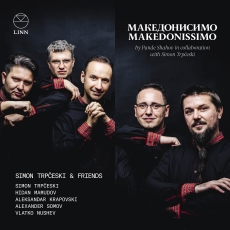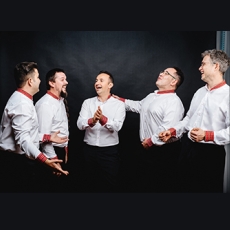Simon Trpčeski - Makedonissimo - MusicWeb International
Simon Trpčeski’s project Makedonissimo, or ‘very Macedonian’ took to the concert stage in 2017 and toured throughout Europe, taking in prestigious venues such as the Concertgebouw in Amsterdam and Wigmore Hall in London, and appearing in Poland, Slovenia, Germany, France and Serbia. The concept was to create chamber-music arrangements of Macedonian traditional music, and these were made by Macedonian composer Pande Shahov: “The project Makedonissimo was Simon Trpčeski’s idea and we have closely collaborated during all stages of its development. We selected 19 oros and 4 songs. A medley of dances is called splet (knitwork); I prefer to translate it as plait. The six movements are combined according to the metre: 2/4, 12/8, 7/8, 18/8 (22/8), 7/8 and 13/8. The irregular metre is an important characteristic of Macedonian folk music. Oros are danced in circles, featuring intricate footwork and variety of choreographic gestures, as well as an interesting mise-en-scene of interwoven shapes of lined-up dancers.”
There are a lot of terms here that are probably unfamiliar to many readers, as are the track titles listed. Details are printed in the booklet for this recording, but more important than the ethnomusicological background is an impression of the whole. Contrasting between energetic dance and tender ballad, the music here is at the same time great fun and movingly expressive. Authentic sonorities are preserved in the use of a kaval, a kind of flute played vertically rather than transversely (though is not a fipple instrument like a recorder), and the colourful selection of percussion instruments on hand, at times creating atmosphere with tuned instruments such as a vibraphone. Clarinet can also be counted as ‘traditional’, and Hidan Mamudov’s playing is certainly laden with plenty of authentic sounding ornament. Strings are pretty timeless of course, though they are played with a quite classical vibrato here when the opportunity arises. It is the piano in particular, played with great virtuosity and élan here by Simon Trpčeski, that adds a more jazzy, ‘Western’ feel to the whole. This is not a criticism, but it is the richness and refinement of a concert Steinway and the harmonic language in the arrangements, with plenty of added notes and a thrumming bass, that takes these arrangements furthest away from their pastoral roots.
It has to be said that this mixture of spicily rhythmic dances and gently eloquent songs works extremely well in this setting, which is of course not an attempt to bring absolute traditional music in a kind of authentic ‘revival’, but more an entirely new vision on an entire genre of music, much as Astor Piazzolla brought the tango to the concert hall with his ‘tango nuevo’ approach to what was also a traditional type of music. The overall effect is more ‘jazz’ than ‘classical’ music if you are seeking to find a stylistic shelf to place this disc, but don’t let that put you off trying it if you think you don’t like jazz. Traditional tunes pop up in ‘classical’ music all of the time, from Bach to Copland and Bernstein to Mahler, so just take this in as a rich new source of some superbly performed and recorded sounds, and see how far you get with your living-room choreography dancing to those groovy rhythms.


